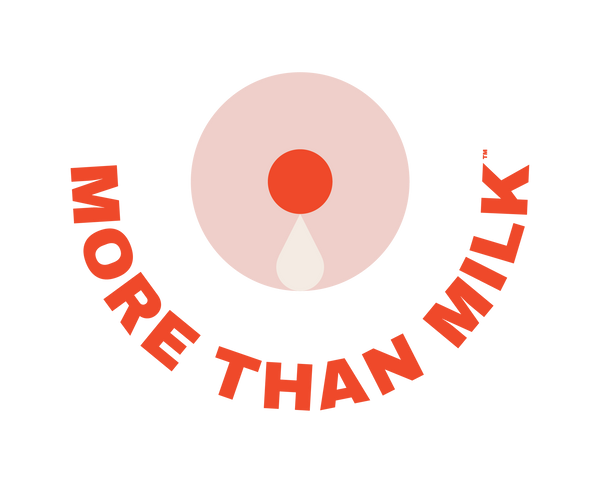Keeping baby cool in the heat
Share

Sometimes, we face periods of hot weather. This can be exhausting for everyone. Babies and mothers need special attention in extremes of temperature to ensure that they are comfortable and well hydrated. When everyone is hot, often the last thing we want is to sit close to someone else! So it's not surprising that babies may be fretful and unwilling to breastfeed at these times. In very hot weather, skin contact can be quite uncomfortable for both you and your baby. A towel, pillowcase, or cloth nappy placed between your baby and your arm and body can be helpful. A cool, damp face-washer in the crook of your arm is refreshing too. Lying down to feed may be more comfortable for both of you, as only baby's mouth and your breast need be in contact. If your baby's skin feels hot to touch, sponge him with lukewarm (body heat) water at frequent intervals. An alternative is bathing often. You only need to use plain water as soap can remove the natural oils from his skin.
Having a glass of water at each breastfeed is one way of making sure your own fluid intake is adequate in these hot conditions. Some mothers find that water bottles placed through the house remind them to drink enough so that they are not thirsty.
Does my baby need extra fluids?
Most parents worry at some stage that their fully-breastfed baby may not be getting enough to drink in hot weather and they ask if they should give boiled water or fruit juice 'just in case'. The answer in most cases is that extra fluids are not required if your baby is breastfed whenever he needs and this may be more often than usual - just as you are drinking more often.
Breastmilk contains a perfectly balanced ratio of food and water to meet all your baby's needs. It is a living fluid, ever-changing to suit your baby and even in response to the weather! The first milk your baby gets from a full breast has a low fat content and naturally quenches baby's thirst. Once the let-down has occurred, the fat content of the milk gradually increases as the breast softens. This later milk has a creamier appearance and satisfies baby's hunger.
In hot weather a thirsty baby may want to breastfeed more frequently but for shorter periods. In this way he is getting more low-fat milk and so is satisfying his thirst. If you need to be away from your baby, it is preferable that he has your expressed breastmilk (EBM).
An older baby or toddler who is no longer exclusively breastfed may be encouraged to drink water between breastfeeds. You can also offer extra 'snack' breastfeeds to keep him well hydrated. Another refreshing idea for toddlers is to freeze fruit pieces, such as orange quarters, peeled banana or slices of pineapple - cooling and fun, just be prepared for the very sticky mess!
- Some babies become sleepy travelling in hot weather. You may need to stop and wake your baby for feeds.
- The effect of car airconditioners can cause some dehydration - so extra breastfeeds may be necessary on long trips, even if you are cool.
- Prams that are enclosed are airless and can get very hot. An open-weave bassinette, cradle, layback stroller, baby hammock, cot or portable cot is probably cooler for your baby to sleep in.
How do I tell if my baby is getting enough milk?
You can check at any time that your fully-breastfed baby is getting enough breastmilk here with this blog. Remember that in very hot weather the urine on a cloth nappy may have dried so it may be necessary to smell the nappy to detect if it has been wet. Disposable nappies should feel heavy to hold after use, unless changed very frequently.
If your baby usually sleeps for at least 3 hours between feeds, he may need to be woken for extra feeds to ensure he gets enough fluid. Fewer wet nappies, dark-coloured urine that smells of ammonia and an unhappy baby who is hot and dry to the touch are signs that your baby needs more fluids. If he will not feed well, is lethargic, with dry skin and mouth, dull sunken eyes and a sunken fontanelle, do not hesitate to seek medical treatment.
Is my baby refusing to feed?
Your baby may seem eager to feed, then pull away after a short time and refuse to go back to the breast. This is your baby's way of controlling how much he drinks. Often he will do this just as the let-down reflex occurs and milk may spurt from your breasts, so it can be good to have a towel handy! You can be assured that he may have just had enough to satisfy his thirst for the moment and will ask for another drink soon. Some babies refuse to feed during the hottest part of the day. They cope by having longer feeds in the cool of the evening or wake more often to feed during the night or early morning. Read my article Breast Refusal for ideas if your baby is refusing feeds even after trying to cool him down. If you need extra help to deal with your immediate situation, contact me.
https://www.breastfeeding.asn.au/bf-info/you-and-your-breastfed-baby/cool
